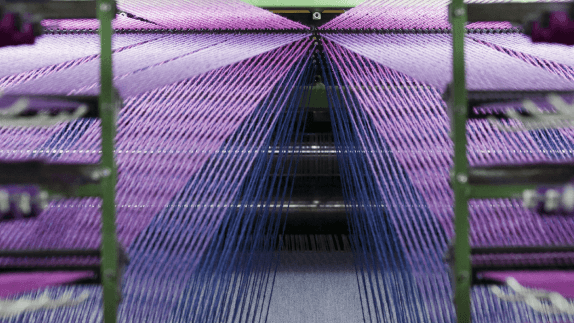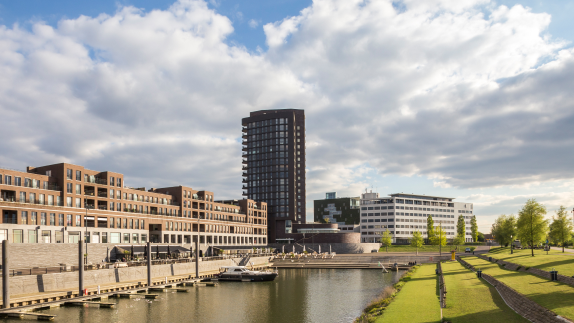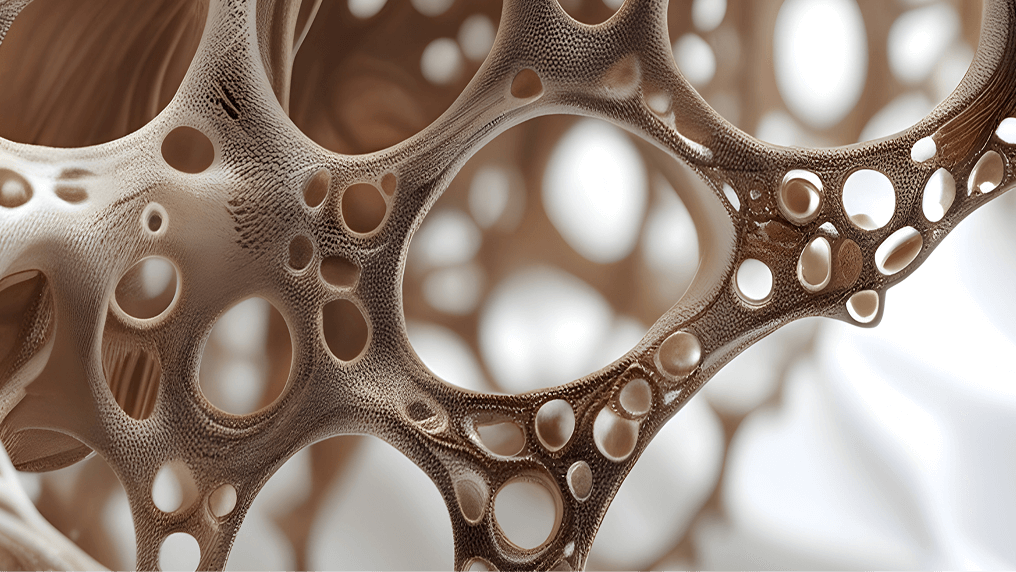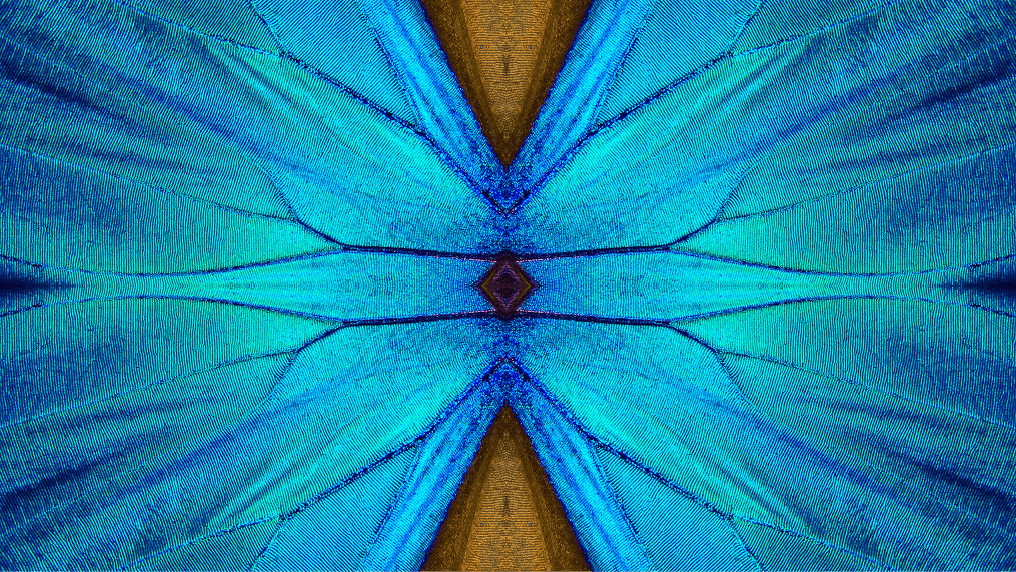Are Cradle to Cradle and the Circular Economy essentially the same thing? In this episode of our Origins season, we’ll explore the key differences and similarities between the two system change solutions.
Join us as we sit down with Katja Hansen, Circular Economy & Cradle to Cradle expert, to explore nuances between the two systems, their relationship with the sustainability movement and how this might have been co-opted by companies to mean “business as usual”.
Have a look at the butterfly diagram mentioned in this episode!
If you enjoyed this episode, please leave us a review, or leave us a comment on Spotify or YouTube. Your support helps us to spread the word about the circular economy.
Listen on Spotify, Apple Podcasts, or wherever you get your podcast.
Click to expand
Colin Webster 00:03
Welcome to the Circular Economy Show from the Ellen MacArthur Foundation. You join me, Colin Webster, alongside my colleague, Pippa Shawley..
Pippa Shawley 00:11
Hi, Colin. And today we're looking at the circular economy and its inspiration. So it wasn't invented by the Ellen MacArthur Foundation. And it's not a new idea. It's inspired by these other schools of thought. So what are some of these?
Colin Webster 00:25
Indeed, yeah. Five schools of thought, and we've been exploring them, of course, across the cities, one of them is Biomimicry. Then you've got Regenerative Design, Industrial Ecology, the Performance Economy, and the focus of today's podcast, which is Cradle to Cradle design.
Pippa Shawley 00:42
Yeah, and it's not just an academic look at these things. We're gonna look at how they fit into the sector economy today and how they're applied in real life, too. So who are we hearing from today?
Colin Webster 00:53
Right. So today's guest is Katja Hansen, and she is a cradle to cradle and circular economy expert. And she's been working in this space for 30 years. And I had a call recently with her She's based in Canada these days.
Pippa Shawley 01:06
It's interesting that she's an expert in both because I feel like Cradle to Cradle is that one school of thought, where when I talk to people about the sector economy, they often reference cradle to cradle and say, Oh, is it like that? So when we hear the differences between the two?
Colin Webster 01:20
Well, we'll certainly hear a lot of similarities. And we can discuss as the podcast goes on, where the differences might be, and where those similarities are. I think the similarities will be striking to the audience, particularly when you have a visual look at the butterfly diagram, the circular economy is so heavily inspired by Cradle to Cradle as we'll go into hear. So, what is Cradle to Cradle? It's a design framework. And the framework has three principles. And...
Pippa Shawley 01:47
Just like the economy.
Colin Webster 01:49
Exactly, yes. So let's go over to capture who starts by telling us all about those three principles.
Katja Hansen 01:58
The first one is the better known, the most well known, I would say and that is, everything is a nutrient or a resource for something else. I have to say it should be should be, everything should be a resource, or a material or a nutrient for something else, because today's world is not that way. So in the design framework, we say we have to design products in a way so that the resources can be reused at the highest level of quality, instead of down cycling, so we can back to upcycling and down cycling there. For that we have a defined two spheres, the biosphere, and the technosphere. So we have products circulating either in the biosphere or the technosphere. And because nothing is black and white, of course, those two spheres intersect. But basically, when you look at a product, you ask, what is the intended use. The second principle is use current solar income. And it is frequently translated as that's renewable energies, which is certainly true, although it is not limiting to that. So it's always open to a reinterpretation of how we might use current solar income. And the emphasis there is clearly on current solar income versus accrued solar income, which is a gas, oil and coal. That is all solar income, except it was accrued over millennia. And then the third principle is celebrate diversity. And for diversity, of course, we have the present example of biodiversity, which we're still losing at an alarming rates. But we also have cultural and conceptual diversity. And in a world where we're looking towards standardization, the challenge is to make standardization work under different circumstances and to celebrate the experience and richness of different cultures. And here in Canada, of course, we're just really approaching going back to acknowledging the wisdom of the First Nations, the wisdom of native people, and how much we can learn from them by learning to listen and learning to look at their stories. And then last but not least, of course, conceptual diversity because we have been doing it for 20 years. And that's why it's the right thing to do is not the right answer. We really need to start thinking outside the box, and changing our approach to thinking and rethinking. So
Pippa Shawley 05:17
Colin, that feels very familiar those things that catcher was talking about there, how it's designed focus that everything is a resource for everything else. Prioritizing renewable energy. I don't know if we talk about that diversity elements so much in the sector economy, though.
Colin Webster 05:33
Yeah, I think I think that's a fair point. And, and of course, by the way, she also talks there about the two cycles of materials, right, the bio cycle, and the tech cycle, and people can see where we got that idea from. To that point, I'm diversity in the earlier days of the foundation, one of our principles was to celebrate diversity. And for us, this was particularly about taking systemic approach and taking inspiration from living systems, which of course require a great deal of diversity to thrive. And our messaging about the circular economy has evolved over time. So we no longer have celebrate diversity as one of our principles of factor. Our principles have shifted a bit over the last decade or so. But the focus on a systems approach hasn't shifted. And if people look at see our food work, you'll see a particularly strong focus on diversity there. And
Pippa Shawley 06:25
I think you asked capture a little bit about how these things interlink as well with the sector economy. So let's hear that. People
Colin Webster 06:31
will recognize the circular economy and these three principles of Cradle to Cradle. And what we are the differences between the two concepts.
Katja Hansen 06:41
The Cradle to Cradle, biosphere and technosphere metabolisms, and what is under Circular Economy terms known as the butterfly diagram originated out of the Cradle to Cradle concept. And Cradle to Cradle as a design framework that's regenerative. And restorative by design is implemented through these fundamental metabolisms. But I have seen a lot of misunderstanding crop up. Since LM MC author foundation popularized the the butterfly diagram, including the biospheres for biological materials, and the technosphere is for technical manmade materials, which is the wrong way around. It is the use off the product that determines in which of the spheres it should be circulating. And so it again, speaks very much to product design.
Pippa Shawley 07:55
So, Colin, let's just focus on that for a second. When catcher talks about things being the wrong way round. Can you expand on that a little bit more? Yes,
Colin Webster 08:03
I was a bit confused, too, when cat two said this. And we eventually in the competition came back to this point. Because of course, the biological materials are for the bio cycle. And manmade materials are for the technical cycle. This is true. But what she means by the use case is that if for example, you have a bicycle, whose tires deteriorate, as you cycle along the road, which is typical of the rubber from the tires will come off. Where does that rubber go? Well, it goes into the biosphere. And but it's a technical material that ends up in the biosphere, so and the use of that material ends up in the wrong place. And the question we should be asking, she said is we should we should be knowing where that material will end up, and therefore making sure that that material is suitable for that cycle. Does that make sense? I think so. So while catcher sees the connections, of course, between the circular economy and cradle to cradle, they're undeniable, she is actually critical of the way the circular economy movement is going.
Katja Hansen 09:15
Circular Economy is pretty much going the same way that sustainability is growing. Originally, sustainability was defined by the Brundtland Commission and there was a report that defined sustainable development, then it was popularized, and now everything is sustainable, the same as everything is green. And you can drive trucks through the holes in that approach. And unfortunately, what we have seen in the circular economy as well is that business has jumped onto it as just another word for doing business as usual. I have to be a little bit critical and say that A lot of companies see the circular economy as a new word to doing business as usual, and having something that is a bit more attractive to them right now, then sustainability, because sustainability has become a little bit boring. There are the UN Sustainable Development Goals, and you have to sort of report on it in the CSR reporting. But do you really, how do you get there? The point is, you really need to affect change. And that is what most companies are reluctant doing, unless they see the value of it. And so one approach for Cradle to Cradle is always to look at the added benefit. So when we look at product design, we're not looking at a product and saying, How can we make this greener? Or how can we make it more sustainable? But we're looking at the product functionality? And we're asking, what could be the added value of this? And one of the I think, fairly well known examples is the carpet that also cleans there. Now, how did Deso come up with the carpet that has the added functionality of cleaning the air? Well marked by asking how do I make a sustainable carpet? Or how do I make my carpet greener? That is sort of a prerequisite for all of it, you know, you have to meet that baseline. But how do you actually innovate? How do you start people's imagination, and that is by looking at the functionality and saying, Well, we have carpets? How can we address one of the bigger problems that we have, and that is that indoor air quality in most buildings, private homes, or offices is four to six times worse than the outdoor air in a lot of our bigger cities around the world. Because a lot of the products that are used indoors were never designed to be used indoors. So what can a carpet do to help us solve that problem? Now it is fine dust, that is frequently a problem. And we're talking about particle matter 2.5 micrometers. And that is a big health issue for people of all ages, starting with the very young. And all across the spectrum, because it affects your lung capacities, it it affects how your cardiovascular system works. And it has actually been proven to have a serious impact on heart disease, but also inflammatory diseases and others. So that's sort of the scientific background to explaining how adding a product firms functionality results in a whole new product. And it is the cradle to cradle design framework with the principles that I have explained, that guides you towards creating those kind of ideas. And none of the other concepts out there really forced you doing that. Biomimicry approaches it by saying, let's learn from nature and engineer how a lot of the solutions that we see might work. And that's why we have always had a very close association. And it factors into our Imagineering sessions, to actually take that into consideration. But a lot of the other more globalized terms out there are exactly that. They're difficult for people to implement, because there are so many approaches and interpretations.
Pippa Shawley 14:24
Colin, there's a lot to unpack there. And I don't know if I agree with all of it. So capture talks there about circular economy kind of being adopted in the wrong way, like sustainable and eco and green words have been used to define what she termed as the everyday business. And I don't know if I agree with that. But I have seen in places regenerative being used in that way. What was your thinking behind that?
Colin Webster 14:53
Yeah, I mean, I don't fully agree with capture on everything that we've discussed in this conversation, but at the same time I can't see what she's talking about in terms of definition or origin. There was actually an academic paper published in the last few years where I think they said there was 144 definitions of a circular economy they found. So, so let's not deny it, there is definition erosion. And I think that's inevitable, as a consequence of the popularization of the term circular economy, that there are a lot of bodies out there who've seized upon the idea. And they seized upon the idea in different ways. So some sees Circular Economy purely as a recycling initiative, or recycling 2.0, or a way of just doing business as normal without really changing how they operate. And we do see examples of that. And we do see people putting their Circular Economy badge on things. And I think that can be troubling. Because we're, that's not the way we see a circular economy. We've got higher ambitions for how a circular economy should operate the Ellen MacArthur Foundation. And I think we're always quite clear about what those ambitions are, and about how we define it. And we're trying to shape conversations so that other people are defining it in the same way.
Pippa Shawley 16:15
Yeah. And I think maybe it'd be helpful to recap on what the Ellen MacArthur Foundation's view of what a circular economy actually is. So it's all through design that we eliminate waste, and pollution, circulate products and materials at their highest value, and regenerate nature. And I guess capture took there a little bit to that last point about how Cradle to Cradle thinks a lot about the regenerative part of it.
Colin Webster 16:42
What I really liked there, from what culture was telling us, and what I really like about Cradle to Cradle, in general, is that multiple positive outcomes, so she gives the example the desks or carpet. And it's not just a carpet that's been designed to go back into circulation for that next use. But it's also a carpet as she puts it, that cleans the air. So they've taken toxins out of this carpet that I understand are typically there. And we of course live in even better insulated living spaces these days. So if you've got toxins in your living room, and then then it's a bigger problem to do that, I guess, ever has been. And I like that Cradle to Cradle pushes designers to think of those multiple benefits. And for me, that's one of the really inspirational things about Cradle to Cradle. And
Pippa Shawley 17:33
she also talked there about biomimicry, which we discussed in the last episode. So it's really encouraging to see all these things working together, even if we have slightly different angles on our interpretation of these things.
Colin Webster 17:44
Definitely. And I think they all do work together. And that's what we're discovering in the CDs. And the interesting thing is that cradle to cradle the book was launched and or released in 2002. And I forget the exact date of the biomimicry book by Janine Benyus, but it was approximately the same time. Yeah, I think it was a few years before. So let's transport ourselves back in time 30 years ago, to where the origin story of Cradle to Cradle lies.
Katja Hansen 18:13
30 years ago, it was chemists named Michael Braungart, who had come a long way in setting up the chemistry division at Greenpeace. And Ted run in into a lot of confrontational meetings with the chemicals industry, as you can imagine. So he was really focusing on not only pointing out problems, but finding solutions. And that's what spawned him into developing the Cradle to Cradle concept. As I mentioned earlier, it's called the intelligent product system at this time. And I started working with him in the early 1990s. So we have shared a long development journey together with many other colleagues. There is quite a large core group that has been working on Cradle to Cradle over the decades. So
Colin Webster 19:14
Michael Braungart got a reference there from catcher and he's one of the co authors of the Cradle to Cradle book. The other one is Bill McDonough. He's an architect. And catcher told me that they eventually met in New York, and they realize that they shared a lot of ideas about the way things could be. And of course, that eventually spawned the Cradle to Cradle book. No catcher was telling us their pepper that they had all these confrontational meetings. And it's not a surprise to me because if you've ever seen Bill McDonough or Michael Braungart speak, they are both very passionate about their work, and they have a very provocative way and real knack of getting noticed some catchphrases that they use, really make people stand up and And take note, I
Pippa Shawley 20:02
think provocative is important when we're talking about systems change solutions caught. And so what kind of provocative things that they talk about?
Colin Webster 20:10
Well, they're in particular, they talk about the end of efficiency and the need for us to focus more on effectiveness. That's one thing that really stood out for me when I heard them speak early on. And we talk about this, of course, at the Ellen MacArthur Foundation, too. So let's go on to hear about that from capture right now. What, what do you mean by moving from efficiency to effectiveness? Why isn't efficiency good enough?
Katja Hansen 20:40
Efficiency basically has a target of zero. Now, do you want to be zero? Or do you want to call it I mean, it just doesn't work efficiency. Efficiency was an approach for us to reduce material consumption, to reduce water consumption to reduce energy consumption. And to minimize the negative footprint. However, as long as we as humans want to live on this planet, our footprint will never be zero. Because we have actions and interactions, and those should be regarded positive. So that's why Cradle to Cradle looks at maximizing a positive footprint. And that's what we call effectiveness. Now, it's not black and white, it doesn't mean that you can't do efficiency when you're also doing effectiveness. But when we're looking at the developed countries in the north, we're putting millions and millions of dollars towards squeezing out a decimal on efficiency, when that same kind of investment in Africa and Asia and Latin America could be doing so much more for efficiency measures. So I'm saying we're mis investing that money. It's not. It's not the right approach. But also, it blocks our thinking, if you always think about how can I get myself to zero? Well, what's the motivation in that? Because when you ask the question, well, how can I actually produce a big footprint, but make it a positive footprint? Then it's first, your imagination, your thinking is automatically switched to a positive attitude of making a contribution. So putting it in simple terms, since a little bit of a play on words is that efficiency is looking at making products better. And effectiveness is looking at making better products.
Pippa Shawley 23:24
I love that Colin? Efficiency is looking at making products better, and effectiveness is looking at making better products. And that idea of humans can't have no impact on the environment. Don't if that was a grammatically correct way of saying it. But we will have some sort of impact. We should make it a good one.
Colin Webster 23:44
Yeah, yeah, absolutely. I agree. A good example of a nice catchphrase that cradles cradle used to provoke a different way of thinking, I think very successfully again.
Pippa Shawley 23:56
And going back to that carpet idea as well, of making better products. Instead of just making a carpet that's a bit less polluting. Yeah, you rethink how you design it.
Colin Webster 24:08
I watched an interview recently with Bill McDonough and he talked about how the cradle cradle of philosophy is vital for a circular economy because first and foremost, you need to create good products, and then you need to circulate them. Now, I would argue that that's what we are arguing for within the Ellen MacArthur Foundation too. But this was his way of putting it and catching attention again, which is we can we can create a circular system that circulates bad products, that unhealthy products. What's the point then that we need to create a system that circulates good products and that's what creative creative
Pippa Shawley 24:47
questions if we even need to create those products in the first place? I think that's the more secular side of it, isn't it keeping things in circulation, rather than making the things just because we can
Colin Webster 24:59
Yeah! That's a nice point.
Pippa Shawley 25:00
So Colin, we've heard about what Cradle to Cradle is, and we know that it influenced the secular economy. But how did the Ellen MacArthur Foundation work with Cradle to Cradle to influence what our vision of what a secular economy is?
Colin Webster 25:13
So there was a seminal meeting in Hamburg in the very early days of the Ellen MacArthur Foundation, where the small team who started at the foundation got together with Cradle to Cradle, and I asked catch her, she she was there you see, I asked her to tell me all about what happened.
Katja Hansen 25:33
Well, it was actually a great week, when Elon had just formed the foundation, or was in the process of forming the foundation and had put together the core team, she had met Michael Braungart and said, This cradle to cradle approach really appealed to me. And I would like to use the Foundation's work to educate people about the concept. But first, I want to educate myself and my team. And so they spent a week with us in Hamburg and us being a whole team of scientists and practitioners at EPA. And I was in that core group. And so we spent a whole week explaining and discussing the Cradle to Cradle approach. And that's where EMF really took on the biosphere technosphere approach, regenerative by design, the systems approach, which is something that is inherent to Cradle to Cradle, and has been emphasis, emphasized by Ken Webster, and a lot of his work, because the challenge, and I think that also addresses a problem that we're facing today. And that is that complexity makes people turn away, because it just gets too complicated. And so we're trying to find simplistic and linear solutions to things, which, in a lot of cases aggravate the problem, because that's not how the world works. It is a systems approach. It is holistic, and it is complex. But if we're not daring to dissect that complexity, we're always just going to have patched solutions, or we're going to even make things worse, because if you turn one screw, it's going to affect the whole system.
Pippa Shawley 27:51
Well, come on, I think the impact of cradle to cradle on the circular economy, it's quite clear to see you've got those two cycles of materials, you've got the healthy material choices, and those positive environmental outcomes. What are the differences between cradle to cradle and the sector economy?
Colin Webster 28:09
Well, I think I might catch I might not agree entirely with me when I say this. But as far as I can see, the points of difference are that we've got much heavier emphasis on business models, and indeed on the economic case. So when we put together those initial economic reports, and of course, we've continued to do so I think that has really been a game changer for getting the circular economy noticed. In the corridors we want it to be noticed. Then also, I think there's there's a heavy materials focus on the Cradle to Cradle framework, not necessarily farming, focus, food. And farming, of course, has been something that we have done a lot of work on during the years. And you don't necessarily see that within the Cradle to Cradle framework.
Pippa Shawley 28:53
So that was Cradle to Cradle one of those five schools of thoughts that inspired the circular economy. The next episode is looking at regenerative design.
Colin Webster 29:04
Yes, indeed, the next episode is regenerative designer, I had a great interview with Sean Quinn. And I'm sure listeners will really enjoy hearing all about that I loved hearing about regenerative design and looking at it as closely as I did. But let me also say I really love Cradle to Cradle I think when I first started Ellen MacArthur Foundation was one of the first books I read. And it really inspired me helped helped me think differently about the way materials could cycle through the economy. And it's the way in which has written the inspiring we have people like bronkart McDonough and indeed catcher Hansen that really captured my imagination. Well,
Pippa Shawley 29:45
Thank you for joining us today, Colin, and thank you to everybody who's listening. If you enjoyed this episode, then please share it and subscribe if you don't already do the circular economy show, wherever you get your podcast. Colin, and I'll see you next week for Regenerative Design.
Colin Webster 30:01
Looking forward to it! Goodbye for now.
Pippa Shawley 30:02
Bye!

The Circular Economy Show Podcast
The Circular Economy Show Podcast explores the many dimensions of what a circular economy means, and meets the people making it happen. Each week our hosts are joined by experts from across industry, governments and academia to learn more about how the circular economy is being developed and scaled.







